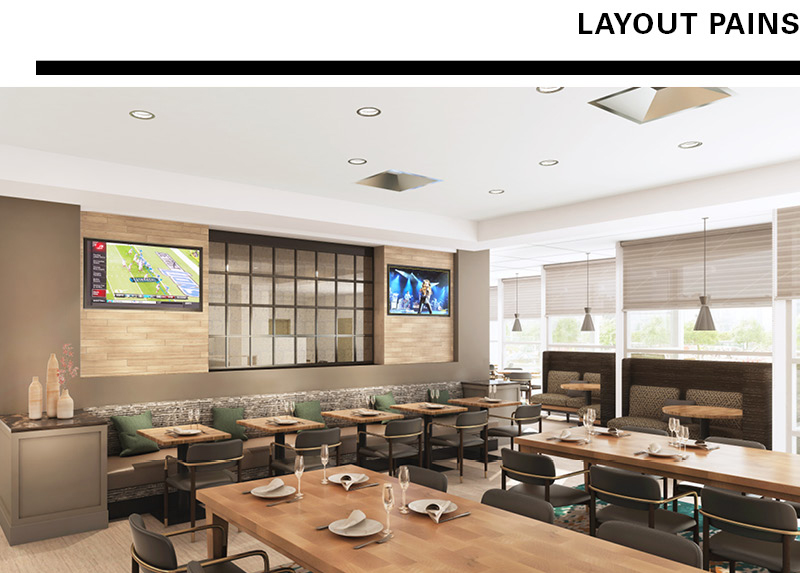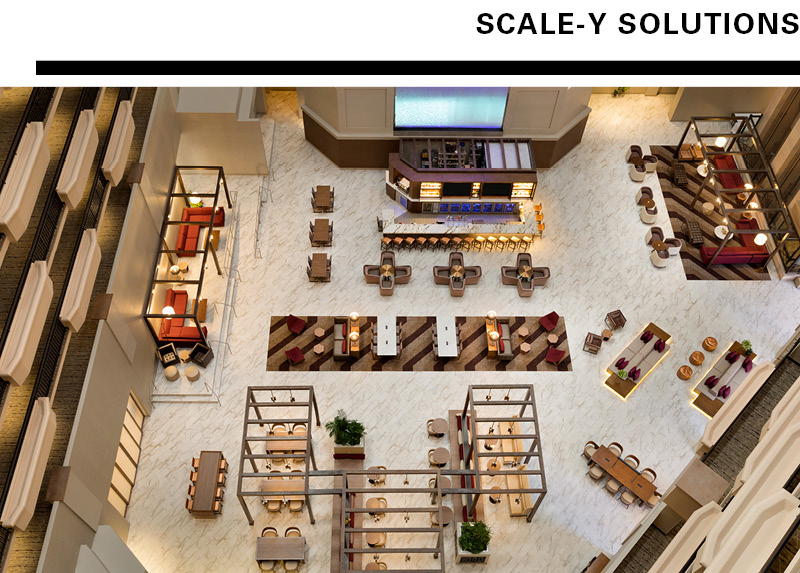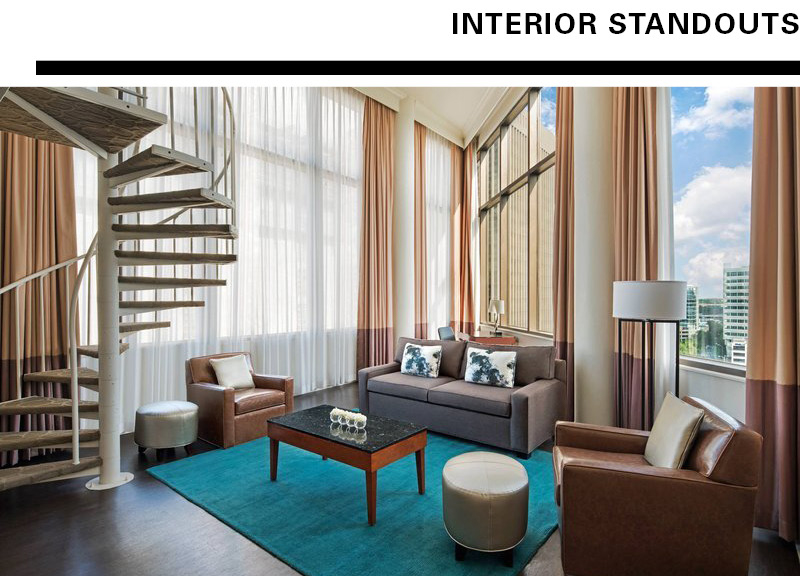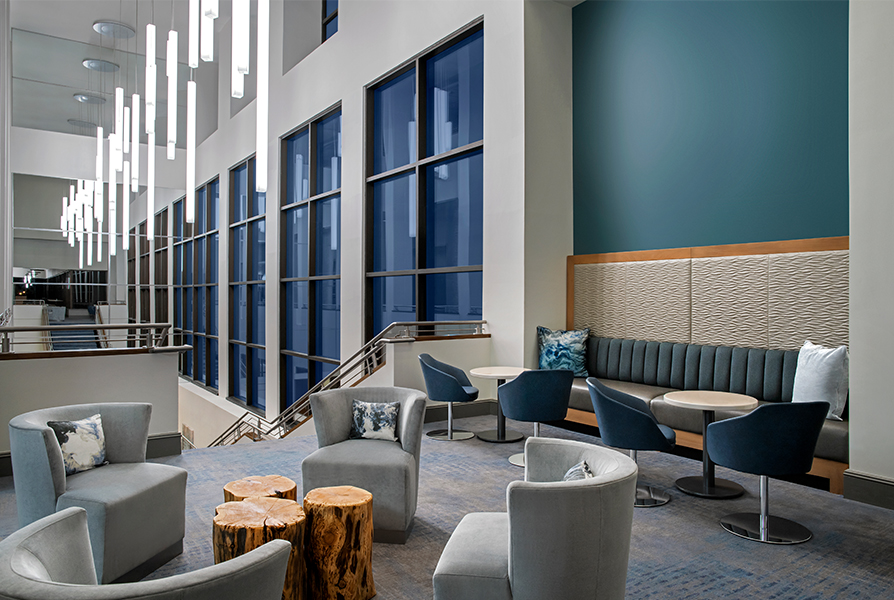In hospitality, customer experience is everything. And as customers change, so, too, do the brands that serve them. But when a new brand enters the market or expands its portfolio, how does this change integrate into the hospitality landscape?
Building new isn’t always the best option and while some brands ramp up, others ramp down. This is where conversions come in; adapting the bones of an existing hotel to fit the operations and design aesthetics of an entirely new brand (and sometimes new flag – think Moxy, Tapestry, Cambria, and many more). Today, more than ever, we’re seeing a spike in brand conversions because of shifts in demographics, technology, and travel preferences. Travelers have more options than ever – and owners and hoteliers need to remain competitive.
From the outside looking in, brand swaps can seem like a cakewalk. But, in reality, conversions are difficult. They take a lot of work, design expertise, and effective collaboration. Over the years, our design teams have learned a thing or two about hotel conversions, so we’re taking you behind the scenes to explore a few of the most common brand swap challenges.

The thing about conversions is they require rethinking and rebranding a new design into an existing hotel’s footprint and structure, all while adhering to code and accessibility standards, and sometimes keeping required key elements in the new design. When our team was tasked with converting a full-service Hilton into a DoubleTree hotel in Birmingham, AL, every public space, corridor, back of house, and guestroom within the 8-story building needed to balance meeting Hilton’s DoubleTree specifications and general building codes. It was also important to tell the DoubleTree brand story while celebrating the city’s industrial history of renewal and reinvention.
The newly-designed public space lobby and buffet were expanded to encompass previous back-of-house areas, which required electrical, mechanical, and plumbing engineering systems redesign, as well as structural modifications. These big changes are not always budgeted, so a rigorous value engineering effort brought the new design into the client’s financial parameters. In the end, we were able to create a DoubleTree design embraced by Hilton and our client alike.

Another complicating factor? Scale. The bigger the building, the more robust and complex the systems and square footage to redesign. All of this adds up to more time and higher costs. On the engineering side, more square footage translates to more system upgrades and part replacements. This is why during the initial stages of converting a Hilton Suites into an Embassy Suites in Phoenix, AZ, our in-house engineering team asked comprehensive questions, and performed numerous site visits to confirm nothing was overlooked or omitted, while the architect maintained communications with consultants. A proactive approach to the new design intent and systems meant the project stayed on schedule, while improving air balance, comfort temperatures, and sound attenuation throughout the hotel.

Though hotel conversions can be complicated from an architectural and MEP engineering standpoint, our experience is that it’s the interior designer who transforms the existing hotel with a brand new story. When our team converted the Richmond, VA Crowne Plaza to a fresh and innovative Delta Hotel by Marriott (the 2nd Delta conversion in the US), there were old Crowne Plaza features that either had to be kept and redesigned to meet Marriott standards, or eliminated altogether. Since the hotel had gone through several brand transitions prior to our involvement, our architects and designers brainstormed and held charettes to think as creatively as possible. The chunky geometric postmodern hotel guestrooms decked in fiery orange and pink were stripped back to their original bones; guestrooms were transformed through the purposeful layering of natural materials and the incorporation of day and night lighting. The result? A sleek, modern space with a neutral palette that reflects Delta’s sophisticated style.
Whether providing architecture, interior design, or MEP engineering services, brand conversions can be a challenge. That’s why we’re all about asking the right questions that guide us to the best solutions. By asking questions upfront, utilizing the talents of a unified, multidisciplinary team, and cranking up the creativity, you can smoothly take a hotel from one brand to the next. Converting an outdated casino into the Caribbean’s first AC? Done it. Reimagining a tired Holiday Inn as a dynamic DoubleTree? We’ve done that too. The reality is: we love the challenges that brand swaps present, requiring us to flex our creative and technical muscles to achieve on-brand design no matter the starting place.
Interested in some more tales of conversion? Check these out:


